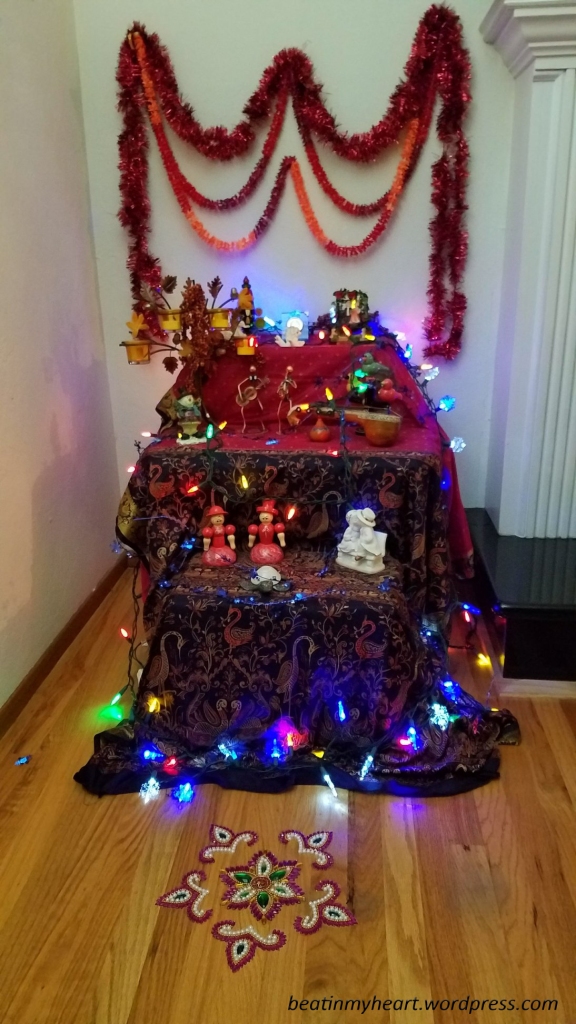When me and my brother were kids, every year during Dasera we had bommala koluvu at our house. My grand parents also had one. Infact pretty much everyone in our family had one. We used to have fun setting it up, decorating and everything. We usually had holidays all 10 days of Dasera. So, we used to set it up in our place and go and compare it with the one at my grandparents place. It was so much fun.
After I got married, I was not sure if I could still continue doing all this. When I asked my MIL, she told me that we did have the tradition in the family. So, I took it upon myself to do it. I have been doing it almost every year. I might have missed a year or two in between. This year, I was. not sure if I wanted to have the koluvu all 10 days. I was thinking about setting it up on Saturday evening and have it for only 7 days. But, Sarath wanted to set it up yesterday. He did help me with the setup and decorations. I was a bit sad that we only have a few items to put in the koluvu. I wish we had more so that I could set up a bigger one. Hopefully I will collect more over the next few years.
Sarath is now starting to learn more about our festivals and traditions. So, I am planning to make these 10 days of Dasera kind of special. I have plans to make a different sweet everyday and also make some yummy foods over the weekend. Hopefully I will be able to blog about it. Happy Dasera to everyone who celebrates the festival!!



